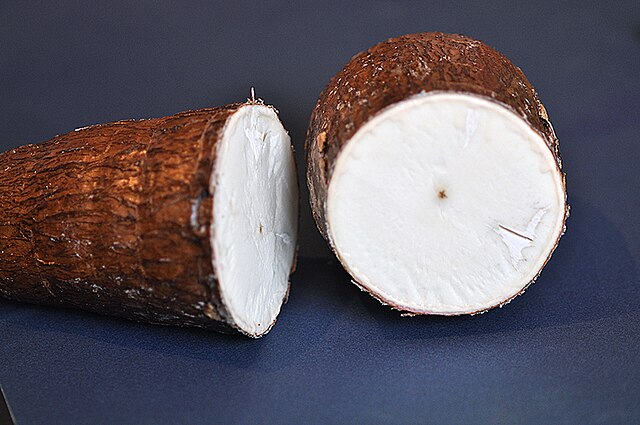Nigeria’s cassava sector is slowly but surely turning lucrative through huge bioethanol projects, finally redeeming massive hidden potential.
One of these is the Cassava Bioethanol Initiative championed by Abubakar Bagudu, the Minister of Budget and Economic Planning.
The other is the strategic backing by the Minister of Agriculture for a leading farming project known as Agbeyewa Farms.
Doubling Cassava Production for Bioethanol
The premise of the Bioethanol Initiative is to tap the most lucrative part of the cassava industry, namely biofuel production.
Charting the way for this project is first doubling cassava production from 2023’s 62 million tonnes (t) to 120 million t.
According to minister Bagudu, expanding harvests in tandem with biofuel production will uplift rural income by creating 8,000 jobs.
By tapping upcoming market channels for ethanol, farmers will no longer have to grow only for subsistence or sell at low prices.
Lush cassava cultivation will also make Nigeria boost food output through sustainable means that reduces greenhouse emissions.
Besides upping manioc cultivation, the initiative will also allow private firms have a stake in the country’s bioethanol economy.
Private-Public Tapioca Economy
The private-public partnership ideal has come out through the practical support of the Minister of Agriculture and Food Security Abubakar Kyari.
On March 10, 2025, the minister visited the trail-blazing Agbeyewa Farms, which he praised for its food security model.
This cassava farm in southwestern Nigeria’s Ekiti state has followed the government’s call for integrating farming and processing.
Its upcoming agro-processor will sit upon 26 hectares and will put out a slew of tapioca products from flour to ethanol.
Its production also echoes the bioethanol goal to double cassava cultivation. According to the farm’s MD Seyi Oskar Aiyeleso, the farm has extended from just “102 hectares in 2022 to more than 1,500 ha [to date].”
In productivity, yields have now reached 30 tonnes a hectare (ha), way above the Ekiti state’s average of 6 tonnes/ha.
Staple Food
Speaking of which, Nigeria has for years enjoyed poor yields from its biggest tuber crop despite its feeding millions.
Cassava (Manihot esculenta), or gbaguda in Yoruba is a national staple through such ethnic dishes as foofoo, garri, eba and abacha.
All this underpins the role that bioethanol will play to make cassava farming in Nigeria finally pay off. And as the statistics below brief, Nigeria leads the global production and consumption of cassava, mostly via smallholder farms.
Statistics on Cassava Farming in Nigeria
Nigeria is the world’s numero uno producer of cassava at between 58 and 62 million tonnes annually, between 2019 and 2023. Central African neighbor, the Democratic Republic of Congo, follows at 48.8 million tonnes (2023-24). Thailand comes third at 34.1 million tonnes (2023- 2024).
In area, Nigeria’s tapioca acreage grew from over 9.164 million hectares (ha) in 2020 to 9.878 million ha in 2023, mostly smallholder. Yields, however, have stagnated at roughly between 5 and 6 tonnes per hectare, despite a maximum 30 tonnes/ha capacity.
The table below paints a five-year average production and yield picture in Nigeria, courtesy of FAOSTAT.
| Year | Production [fresh cassava in tonnes] | Yield [t/ha] |
| 2023 | 62,690,091 | 6.346 |
| 2022 | 61,015,339 | 6.014 |
| 2021 | 58,237,500 | 5.836 |
| 2020 | 55,565,610 | 5.780 |
| 2019 | 56,969,160 | 5,827 |
Is Nigeria a major cassava exporter?
Despite being a production leader, Nigeria trails Asian countries like Thailand in exports, for it is a minor player in cassava trade. While Thailand led the world with over 2 million tonnes of cassava starch exports in 2021, Nigeria finished 56th with 36,000 tonnes. This according to the World Bank.
Is cassava consumption in Nigeria as high as production?
The reason Nigeria is a poor exporter of fresh or starch cassava is because it consumes virtually all its production. In 2019, for example, while production was at over 56 million tonnes, consumption edged it at 61 million tonnes. Only the Democratic Republic of Congo and Thailand, each at 32 million tonnes, came close of any nation.
